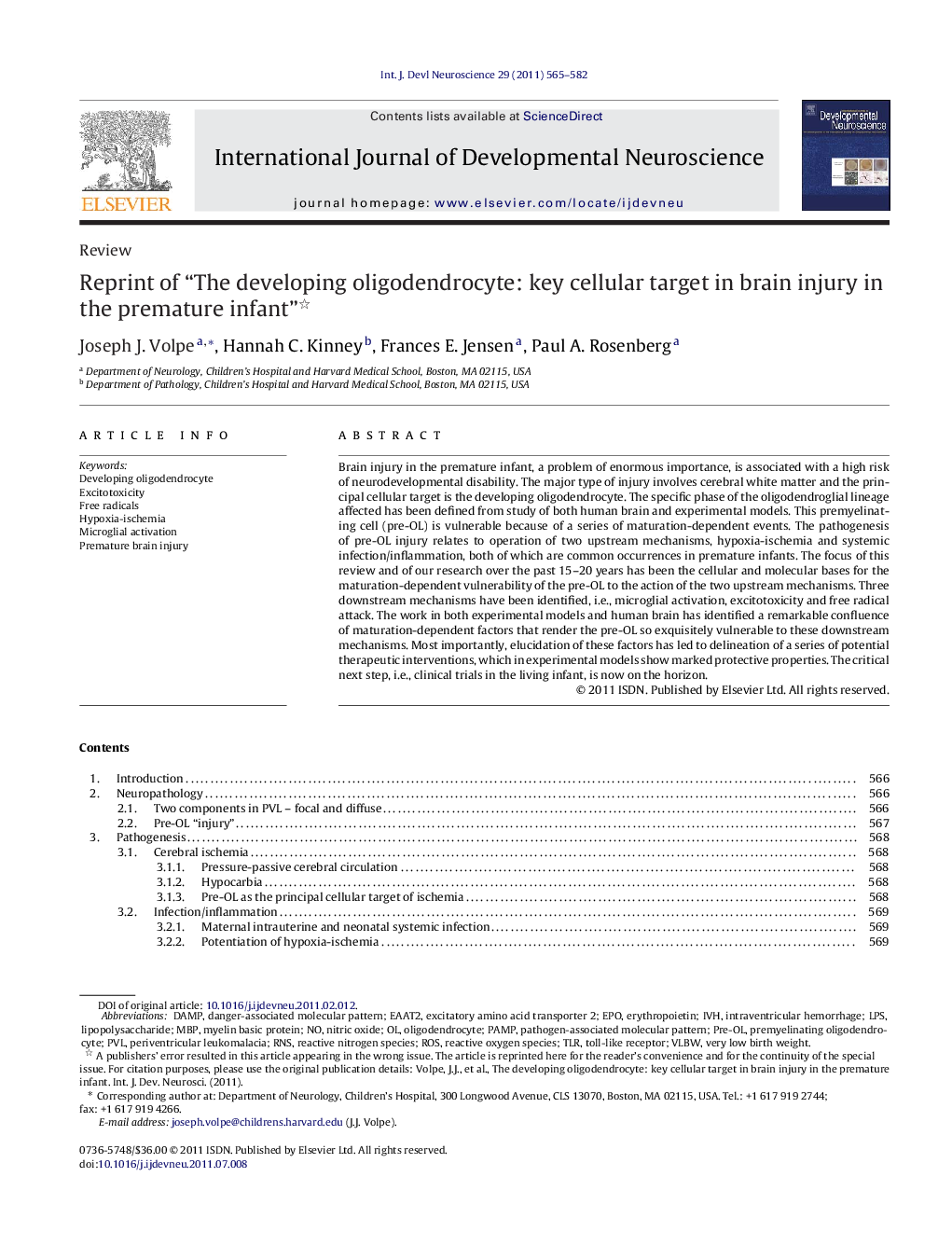| Article ID | Journal | Published Year | Pages | File Type |
|---|---|---|---|---|
| 2786481 | International Journal of Developmental Neuroscience | 2011 | 18 Pages |
Brain injury in the premature infant, a problem of enormous importance, is associated with a high risk of neurodevelopmental disability. The major type of injury involves cerebral white matter and the principal cellular target is the developing oligodendrocyte. The specific phase of the oligodendroglial lineage affected has been defined from study of both human brain and experimental models. This premyelinating cell (pre-OL) is vulnerable because of a series of maturation-dependent events. The pathogenesis of pre-OL injury relates to operation of two upstream mechanisms, hypoxia-ischemia and systemic infection/inflammation, both of which are common occurrences in premature infants. The focus of this review and of our research over the past 15–20 years has been the cellular and molecular bases for the maturation-dependent vulnerability of the pre-OL to the action of the two upstream mechanisms. Three downstream mechanisms have been identified, i.e., microglial activation, excitotoxicity and free radical attack. The work in both experimental models and human brain has identified a remarkable confluence of maturation-dependent factors that render the pre-OL so exquisitely vulnerable to these downstream mechanisms. Most importantly, elucidation of these factors has led to delineation of a series of potential therapeutic interventions, which in experimental models show marked protective properties. The critical next step, i.e., clinical trials in the living infant, is now on the horizon.
► Premyelinating oligodendrocyte the key cellular target in white matter injury in premature infants. ► Pathogenesis of injury is initiated by two initiating upstream mechanisms, hypoxia-ischemia, and systemic infection/inflammation. ► Principle downstream pathogenetic mechanisms are microglial activation, excitotoxicity and free radical attack. ► Experimental studies suggest many potentially effective preventative interventions.
